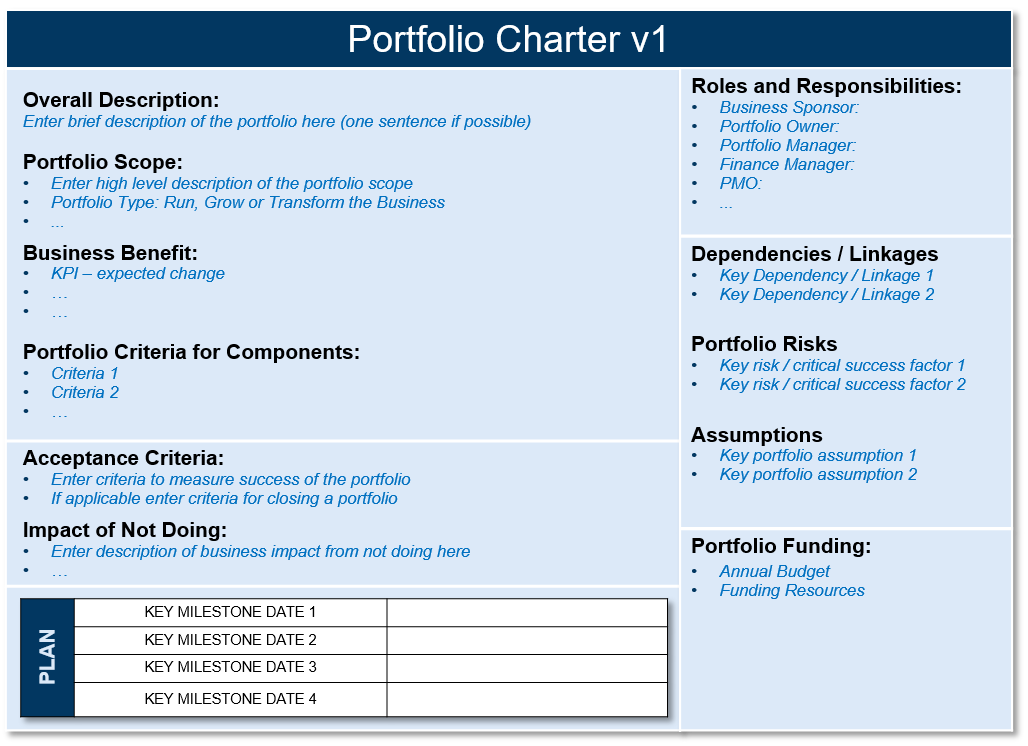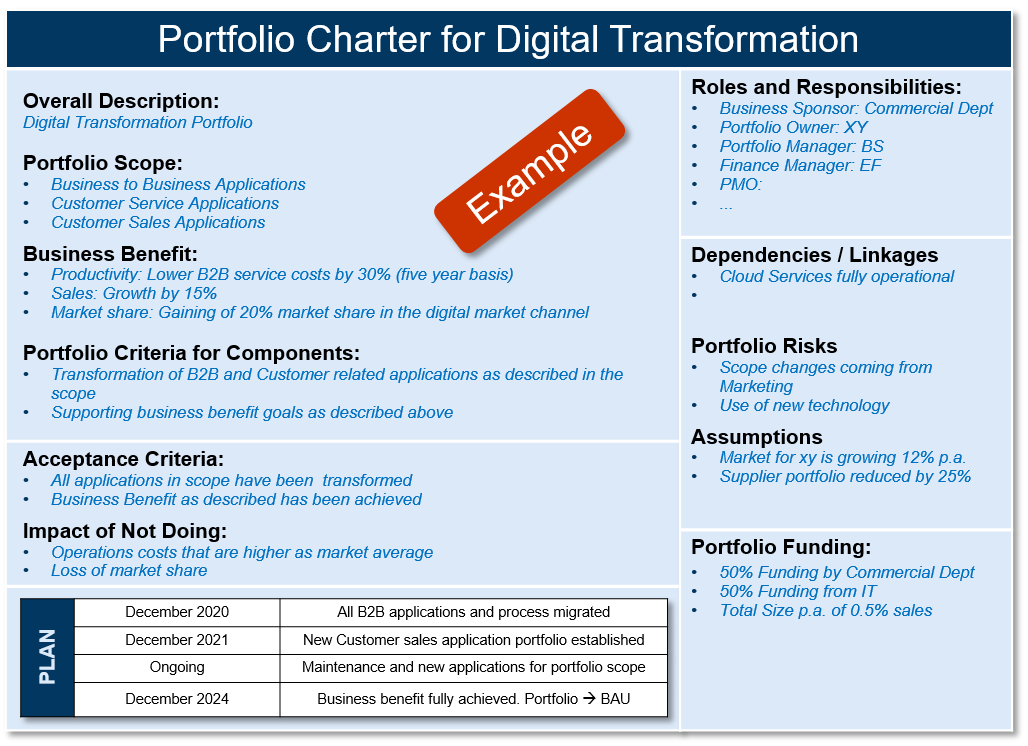Portfolios are often kept very general or are not defined at all and therefore only form a kind of container for projects. Thus it can only be used insufficiently as a means of management and control and it is highly recommended to think in more detail about the purpose of the portfolio.
The Portfolio Charter is a helpful tool in this respect:
The following elements are summarized here:
Overall Description
A short, concise description of the portfolio, preferably in one sentence. It should indicate where the portfolio is to be positioned.
Portfolio Scope
Enter here the main points regarding the size and type of the portfolio. Common portfolio types are
- Run the Business: Maintenance of existing applications and infrastructure. This also includes regular growth from business processes.
- Grow the Business: Merger and Acquisition, but also Divestiture. Changes in the organization that go beyond organic growth (positive or negative).
- Transform the Business: Project portfolio that sustainably changes business processes. In addition to innovation, a focus is also placed on productivity.
Business Benefit
Here the various benefits are listed which are to be aachieved by managing the portfolio respectively the associated projects.
Portfolio Criteria for Components
Projects which are financed from the portfolio and thus also managed must meet the right criteria in order to be accepted. This is to prevent dilution.
Acceptance Criteria
Portfolios may be defined for a limited period of time and closed again if certain target criteria are met. These criteria can be specified here. In addition to the acceptance criteria, specific termination criteria can also be listed in order to prevent the portfolio from being continued although the objectives can no longer be achieved. In the case of unlimited portfolios, such as Lifecycle, this section can of course be left empty.
Impact of not doing
Description of the consequences if this portfolio is not executed. The decision-makers must know what it means if the proposed portfolio is rejected.
Milestones
Under certain circumstances it makes sense to define intermediate targets for the portfolio, similar to a program. If necessary, these can be entered here, otherwise this part is left empty.
Roles and Responsibilities
Description of the most important stakeholders in the portfolio
- Business Sponsor: For portfolios related to business, a sponsor from the relevant area should be nominated.
- Portfolio Owner: Owner of the portfolio who belongs to the business or technical department (e.g. IT). Owner and sponsor can possibly be the same person, for example if it is a purely technical portfolio.
- Portfolio Manager: takes over the operational portfolio tasks and ensures communication with the strategic portfolio management.
- Finance: Ensures financial processes and information flow
- PMO: If available, representative of the Project Management Office.
In addition, other important roles can of course be added.
Dependencies / Linkages
Like projects/programs, portfolios can also depend on other factors. For example, certain technologies. It is important to recognize them otherwise the portfolio cannot be executed successfully.
Portfolio Risks
The focus here is not on risks relating to individual projects. These are described in the corresponding risk registers. Portfolio risks are those which affect the entire portfolio either from outside or within, such as cluster risks (risks which affect many or even all projects and represent a major hazard when they occur).
Assumptions
Portfolios - such as projects - are also based on certain assumptions. These should also be listed in the charter.
Portfolio Funding
Finally, the funding of the portfolio has to be secured and therefore it is defined where the capital comes from and how much should be invested per year or quarter. These can be absolute or relative figures, for example in relation to turnover.
Below is a simple example of a portfolio charter:




